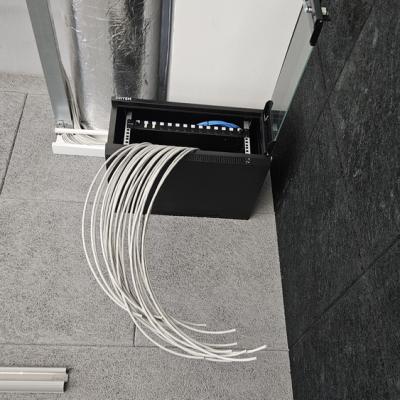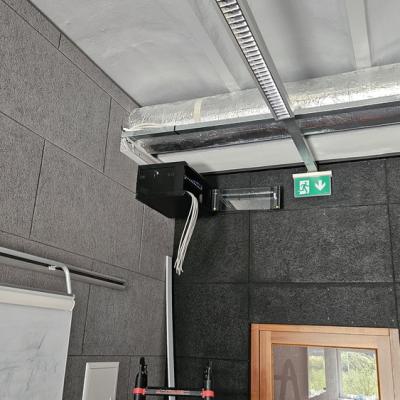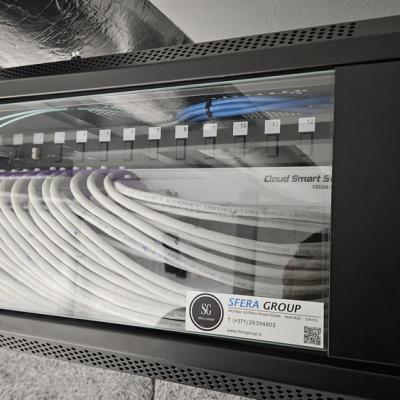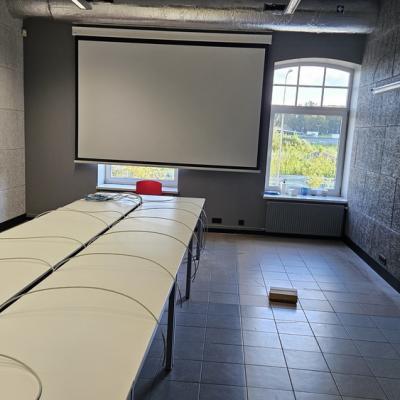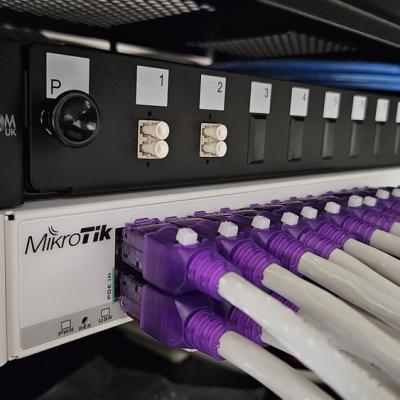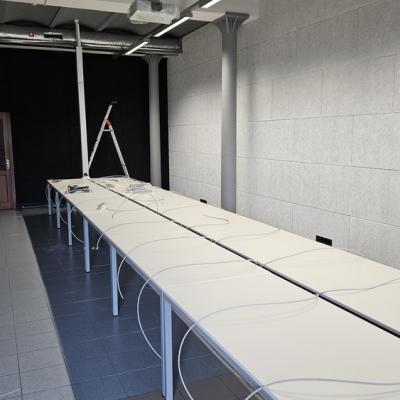SFERA GROUP
We design, install and integrate Structured Cabling System (SCS) with skilled experience and creativity, delivering reliable, customized security solutions.
Structured Cabling System (SCS)
A structured cabling system (SCS) is a complete set of communication cables and patch equipment that meets relevant regulatory requirements.
Key Benefits of Structured Cabling Systems (SCS)
- Scalability and Flexibility
- Universal Infrastructure
- Cost Efficiency
- Simplified Management
- High Performance and Reliability
- Improved Aesthetics and Safety
- Future-Proofing
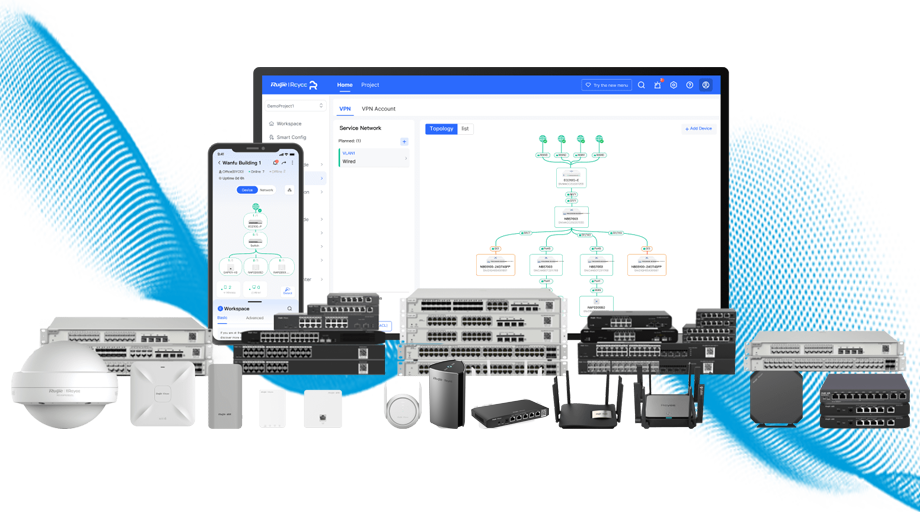
Structured Cabling in details
SCS includes a set of cables and patch components, as well as the methodology for their integrated use. It enables the creation of expandable structured connections for local networks of various purposes. SCS serves as the physical foundation of a building’s infrastructure, unifying a wide range of network services: local area networks (LAN), telephone networks, security systems, video surveillance, and more.
Modern organizations rely on local networks to connect computers, phones, and peripheral devices. Today, it's hard to imagine data exchange without network connectivity — whether wired or wireless. Disks and waiting in line for the printer have become a thing of the past.
The solution is a technology known as SCS. Structured cabling provides a universal telecommunications infrastructure for a building or group of buildings, supporting the transmission of all types of signals — voice, data, and video. SCS can be deployed even before the exact user requirements or network protocols are known. However, knowledge of the number and location of workstations, walls, and functional zones significantly enhances project efficiency and reduces costs.
According to standards, SCS can support 50 to 50,000 users across areas up to 1,000,000 m². It forms the backbone of a computer network integrated with telephony. A set of telecommunications equipment connected via SCS forms a local network.
SCS Design
Clients may not be familiar with all the details of system implementation — that’s why we carefully explain the nuances. The customer is ultimately responsible for approving the selected project solution. Our company always coordinates the project before beginning any work.
At the commercial offer stage, we already prepare a preliminary design with a detailed specification. Our clear understanding of the project scope and balanced pricing ensures the competitiveness of our proposal. Optimal design solutions and accurate calculations allow us to carry out installation with minimal deviation from the initial specification.
Detailed planning begins immediately after signing the contract and significantly shortens the project’s preparation period.
SCS Installation
We use symmetric cables of category 5e or higher for both computer and telephone networks. This provides clients with a flexible and future-proof infrastructure. We do not use category 3 cable — a common cost-cutting approach — to ensure system universality and interchangeability of computer and telephone network components.
The choice of cable category depends on required data speeds. We consider both current and future needs:
Category 5e and 6: up to 1 Gbps
Category 6a, 7, 7a: up to 10 Gbps
Category 7a cables also allow transmission of the entire range of cable TV channels via a single pair, which can be useful for creating universal structured lines.
Standards Recommendations:
- Offices: Use at least Category 5e cabling to support typical data and voice communications.
- Data Centers, Healthcare, and Educational Institutions: Require a minimum of Category 6a to handle higher data throughput, reduce latency, and ensure reliability in mission-critical operations.
- Private Homes (Broadcast and Communications): Category 7a is recommended to support high-definition multimedia, IPTV, and home automation systems with minimal interference.
Since twisted pair and coaxial cable have different impedance, a 100Ω/75Ω wave adapter with the appropriate connectors is required at both ends. In backbone subsystems, universality does not apply — various cable types ensure the best quality for data and voice applications. When installing SCS, it's essential to follow rules for routing power and low-voltage cables. Voltage fluctuations can cause unwanted interference. Proper design and installation supervision ensure minimum permissible distances are maintained.
Unshielded SCS performs well on short distances. For cable lengths of 70–90 meters, shielded systems are recommended for better parameter reserves and interference protection. Shielding also helps reduce inter-cable crosstalk and power cable influence.
Minimum permissible distances are determined based on:
Electromagnetic protection class of the low-voltage cable.
Type of metal cable trays.
Number of power cables and current levels
Electrical Work
SCS installation often requires associated electrical work. Each workstation must have information or IT outlets. These are not electrical sockets — electrical installation is not part of SCS.
We ensure proper separation of power and low-voltage wiring. During installation, we follow standards for grounding trays at partition crossings, cable bend radii, channel fill limits, and other design, installation, and administration requirements.
Why Clients Choose Us:
We ensure quality low-voltage system implementation
Our team has strong experience in both standard and complex installations
A dedicated manager handles project communication
Clients may adjust requirements during implementation, and all changes are reflected in the final documentation
We provide labeling and as-built documentation according to SCS administration standards
We deliver test reports with graphical line results for certified systems
We help clients identify and avoid hidden problems in SCS, even those left by other contractors
We install telecom grounding in all systems, regardless of shielding, and always offer surge protection
Universal Compatibility
One cabling system supports data, voice, video, and control signals — reducing the need for multiple separate networks.
Scalability and Flexibility
SCS allows easy expansion and reconfiguration as business needs grow, without disrupting operations
Simplified Maintenance
Standardized layout and labeling make troubleshooting, upgrades, and administration faster and more efficient.
Long-Term Cost Savings
Though initial investment may be higher, structured cabling lowers operational, maintenance, and future upgrade costs.
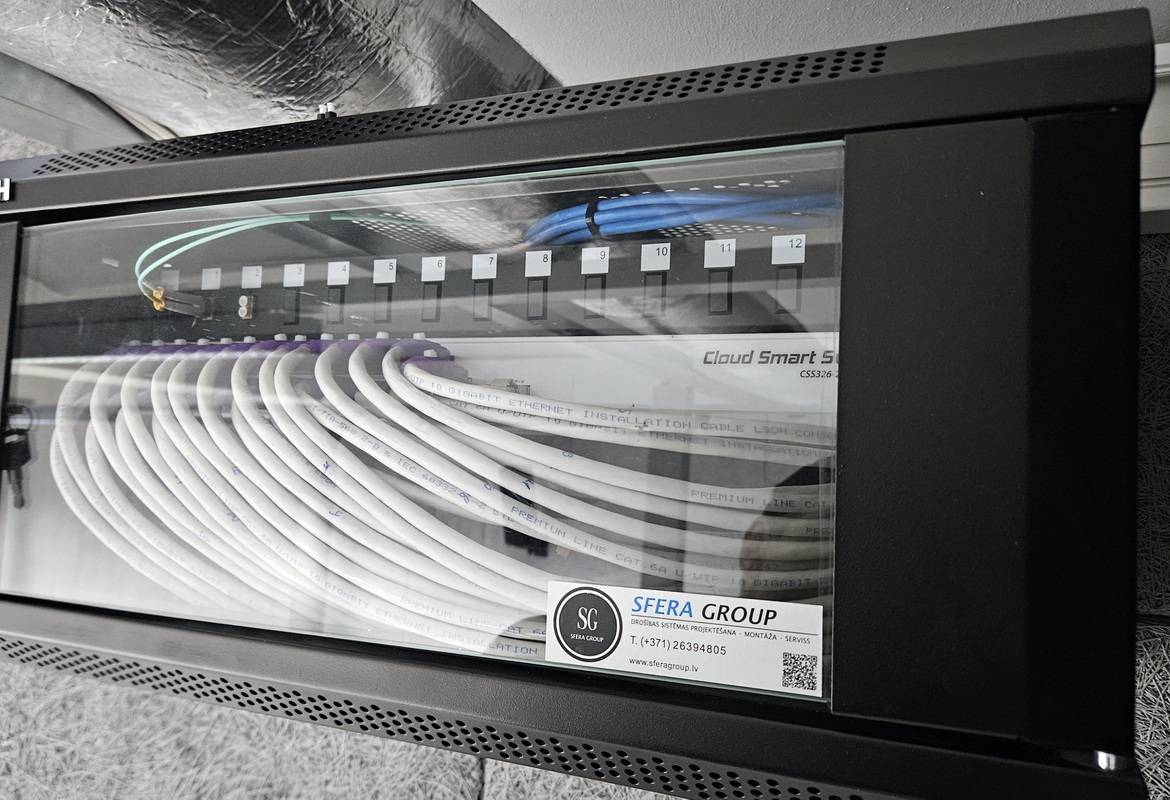
What Defines a Modern SCS System?
- High-Speed Data Support
- Supports 10 Gbps and higher speeds (Category 6a, 7, 7a, 8)
- Ready for Wi-Fi 6/6E and Wi-Fi 7, PoE+, 4K video, and high-bandwidth applications
- Power over Ethernet (PoE) Integration
- Modern SCS supports PoE / PoE+ / PoE++, powering IP cameras, phones, access points, and lighting without separate electrical lines
- Shielded Cabling (F/UTP, S/FTP)
- Better protection from electromagnetic interference (EMI)
- Important in environments with lots of electrical noise or long cable runs
- Fiber Optics in the Backbone
- Core (backbone) of modern SCS often includes multimode or singlemode fiber
- Enables faster data over longer distances (40–100 Gbps+)
- Smart Infrastructure Readiness
- Supports IoT devices, smart building systems (BMS), sensors, environmental monitoring, and access control — all over a unified cabling platform
- Compliance with International Standards
- Modern SCS must follow ISO/IEC 11801, ANSI/TIA-568, EN 50173, etc.
- Ensures future-proofing and multi-vendor compatibility
- Flexible Design for Future Growth
- Modular and scalable designs allow easy adaptation without full replacement
- Supports hot-desking, wireless access zones, and rapid reconfigurations
- System Certification & Testing
- Modern systems come with full certification, including test reports (wire maps, attenuation, NEXT, etc.)
- Ensures quality and warranty from manufacturer (up to 25 years)
Structured Cabling Systems Use Cases
- Corporate Offices & Business Centers
- Healthcare (Hospitals & Clinics)
- Education (Universities, Schools, Campuses)
- Data Centers & IT Facilities
- Retail Chains & Shopping Malls
- Use case: Connecting workstations, VoIP phones, conference systems, and wireless access points
- Why SCS matters: Ensures reliable communication, supports flexible workspace arrangements, enables rapid reconfiguration during office expansion or relocation
Use case: Linking medical equipment, nurse call systems, electronic medical records (EMR), patient monitoring, and video surveillance
- Why SCS matters: Requires ultra-reliable, shielded, and EMI-resistant infrastructure; supports growing number of smart medical devices
- Use case: Connecting computer labs, smart boards, campus-wide Wi-Fi, surveillance, and digital signage
- Why SCS matters: Facilitates high-bandwidth multimedia learning environments and centralized network management
- Use case: Backbone and horizontal cabling for racks, servers, switches, and storage systems
- Why SCS matters: Requires top-tier cabling (Cat.6a/7/fiber), strict performance, future scalability, and thermal/environmental design compatibility
- Use case: Connecting POS systems, security cameras, public address, inventory systems, and guest Wi-Fi
- Why SCS matters: Enhances customer experience, enables real-time inventory tracking, and secures video/audio infrastructure
Need assistance? Share your project details
SCS systems are now a modern essential for ensuring reliable, high-speed connectivity in buildings and campuses, supporting everything from voice and data transmission to security, automation, and multimedia services.

 LV
LV  RU
RU  EN
EN 